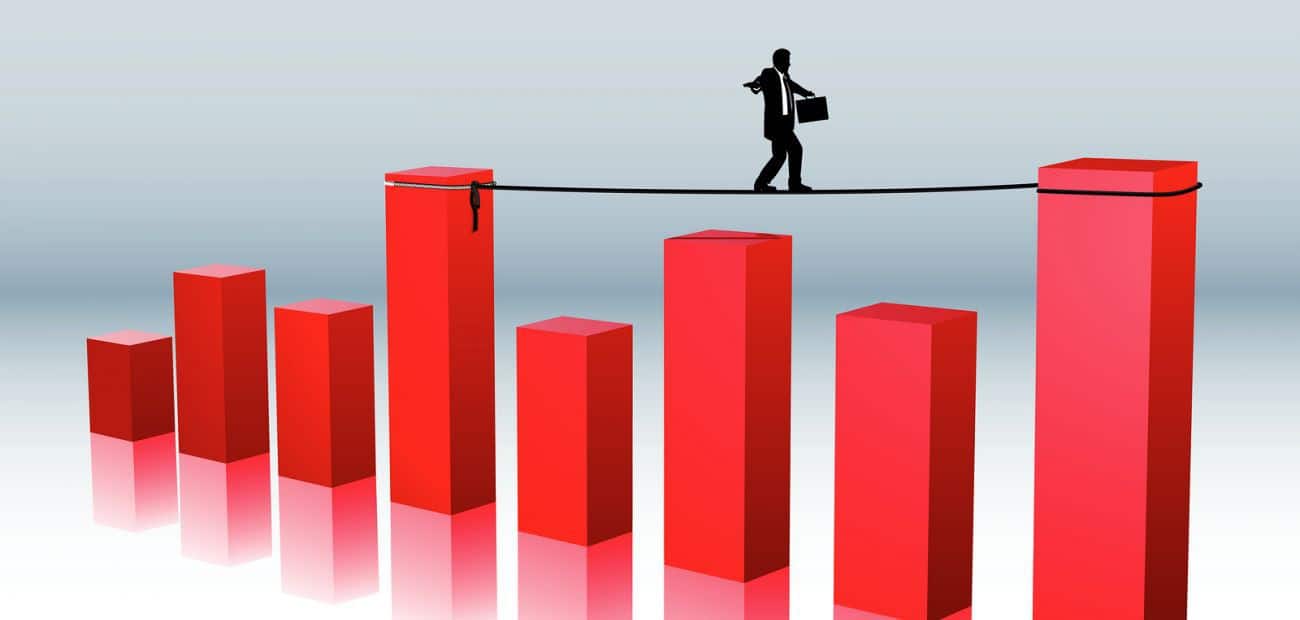“Risk is not knowing what you are doing.”
– Warren Buffett
In last month’s article, we focused on “Faith in the Future” as one of the great qualities to adopt for anyone who wants to become a great investor. This month we focus on a related, but slightly different quality…Great Investors Understand Risk.
Defining Investment “Risk”
In a recent issue of our “Investing Insights”, Great Investors Don’t get Surprised, we included a study of the history of bear markets in the S&P 500 since 1946. We encourage you to read the article, and review the attached chart which details these difficult episodes in investing history. As the chart below shows, since 1946 there have been 14 Bear Markets as we define them, which have lasted anywhere from 3 months to 36 months, and in which the S&P 500 declined by anywhere from (19.3%) to (57%). The chart also depicts the fact that, despite these terrible bear markets, the S&P 500 traded at a low of 13.6 in 1946, and closed 2016 trading at 2238.
This market history shows that, despite the short and intermediate overreactions to cyclical economic events (and investor’s emotional responses to those events), markets are quite efficient in the long run. Over nine decades marked by war and peace, massive geopolitical turmoil, economic booms and recessions and depressions, inflation and deflation, high interest rates and low interest rates, bull markets and bear markets, the S&P 500 has increased in value by over 160 times (not counting dividends).
Why is this so? Why have the shares of America’s great companies produced such an amazing return over the last 9 decades? This question presents an opportunity to point out an answer that will likely run counter to most of the “common wisdom” that most people believe about investing. Most investors believe that stocks return so much over time, because stocks are “risky”, while investments such as bonds or money market funds are “safe”. Of course, as we will see, this wisdom all depends upon how we choose to define “risk”.
Many people define “investment risk” as the volatility that share prices can experience over time, such as is depicted in our Bear Market chart above. Using that definition, the stock market is clearly a “risky” place to invest, and has historically experienced a great deal of volatility. However, the Great Investor defines “risk” a little differently, and instead sees risk as the chance of permanent loss of their capital. Using this definition, any investor who has a reasonably long time horizon (greater than 5 years) has never in history experienced the permanent loss of capital by patiently holding a portfolio of company shares.
The fact that stocks are “risky” is perhaps the most commonly held misconception there is in the investing universe. It is also the misconception that prevents most investors from becoming as successful as they should be.
Why do Most Investors Misunderstand “Risk”?
It is unclear why most investors think this kind of risk of permanent loss of capital might happen to them, given that it has never happened. While stock markets have declined sharply on many occasions, prices have also risen very sharply. The net effect of all of these declines and advances has been a compound return on large company stocks over 9 decades of roughly 10% per year.
From history, we know that:
- Declines have been temporary, at least so far.
- Declines have been completely overwhelmed by the subsequent advances with a net positive advance of close to 10% per year, compounded.
Historically speaking, the risk of permanent loss in a diversified portfolio of equities is not only a misunderstanding, but it is a myth. So why do so many investors insist on believing that the “stock market is risky”? Why do so many people see so clearly something that has never existed?
Nick Murray is an accomplished author and speaker on the topic of Investor Behavior and the influence of emotion in investing. He recently wrote a list of the following reasons why he thinks most investors perpetuate this myth, which is consistent with our experience as well. In the words of Mr. Murray:
They have inherited fear. Many investors fear the stock market because this fear was programmed into their heads by their parents or grandparents, often through horror stories of how the family experienced the Great Depression. While the Depression was in fact a terrible time, which created generational scars, it is also a myth that it was a stock market event. It was in fact an economic event for most people, which was not caused by the stock market.
Stocks as casino chips. For some unknown reason, most Americans cannot grasp the nature of stocks as shares of companies, which represent a direct ownership of the earnings, cash flow, and net assets of businesses which they themselves patronize. They don’t view the “stock market” as a portfolio of substantial businesses with real earnings and real dividends, but instead see stock prices as rootless, random, and inherently unstable. You may have even seen commercials imploring you to “get off the stock market roller coaster ride”. Note to reader: these commercials are trying to sell you something (and using fear marketing to do it)! They see stocks not as investments, but as speculations, not as ownership of businesses but as casino chips. Stocks are shares of great businesses, they are not lottery tickets.
The culture of fear. Our collective fear of equities is constantly fed and magnified by the 24-hour news cycle, and the saying that “if it bleeds it reads”. If we make no other point than this, remember that the function of financial news is twofold: First to foster the illusion that “the stock market” is tied directly – indeed every minute – to the economy, and second to perpetuate the related illusion that the economy is forever on the brink of implosion. The financial news is deliberately a culture of fear, and has no interest in reporting the truth. Instead it flits from crisis to crisis, and it presents each crisis as the very thing that will take down the stock market and destroy your retirement. Don’t watch it.
The culture of language. The language we use about investing also reinforces the myth. We have decided that bonds, CD’s and money market funds are “conservative”, while stocks are “aggressive”. Bonds are “safe” and stocks are “risky”. However, if we define “money” as purchasing power, the only definition of a “conservative investor” which makes any sense is an investor who is focused on preserving their purchasing power against the relentless and inevitable erosion of inflation. As we have seen already, the best way to do that is by owning stocks. So why do we call bonds “conservative”?
The inability to distinguish risk from mere volatility. Of all of the irrational fears our national culture harbors towards the ownership of stocks, this one is the greatest and most fatal. This is the mistaken believe that today’s temporary decline is in the process of becoming a permanent loss. An investor incapable of making this critical distinction, between short term volatility and permanent loss, is doomed.
This last fear is so important it is worth exploring further. Between October 2007 and March 2009, the equity market went down by 57%, making it the biggest bear market since the Great Depression. Then, right on schedule (even completely ignoring dividends), the market surmounted its prior peak by the beginning of 2013. The only way anyone could have “lost money” during the 5 years from market top to full recovery was because they panicked and sold. They elected to mistake a temporary decline for the onset of a permanent loss, and decided to cut bait before it got worse. The market did not create this loss, the investor did.
It wasn’t the end of the world, it just felt like it. As history has proven, the world doesn’t end, it just feels like it is, about every 5-7 years. The 17 months between October 07 and February 2013 are just an extreme example of that fact, and may serve as our generation’s greatest history lesson, that in point of fact:
The dominant determinant of long term, real life financial outcomes isn’t investment performance, its investor behavior.
Having a Plan
The very best investors have a disciplined approach to making portfolio decisions, and always stick to their plan, no matter what the rest of the world is doing. They remain optimistic and invest in the future of humanity, with a healthy understanding that “volatility” and “risk” are two very different things.
No poker chips, and no casino. Just patience and discipline, and a healthy optimism about the future.



Leave A Comment